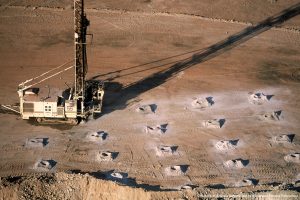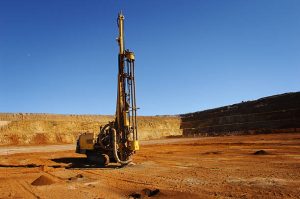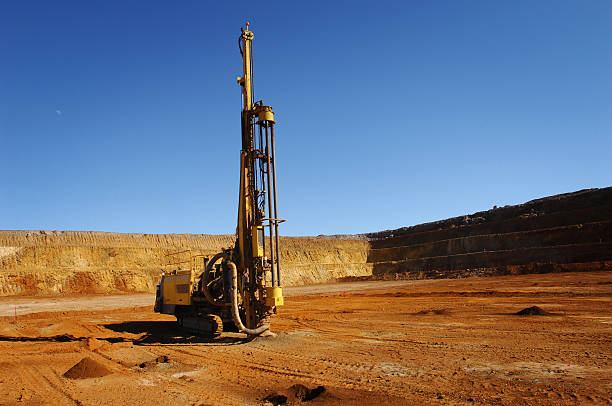What is Blast Hole Drilling Method?
Exploring the Basics of Blast Hole Drilling
Blast hole drilling is a crucial technique used in various industries, including mining and construction, to create holes in the earth for a range of purposes. This method plays a vital role in the extraction of minerals, rock fragmentation, and even civil engineering projects. In this comprehensive guide, we will delve into the world of blast hole drilling, examining its importance, techniques, equipment, and safety measures.
Understanding Blast Hole Drilling
Blast hole drilling is a specialized drilling method that involves the creation of holes in the ground or rock to facilitate blasting, excavation, or resource extraction. The process is integral to mining operations, quarrying, and construction activities. The primary objective of blast hole drilling is to create accurately-sized holes that are strategically positioned for efficient blasting.

The Significance of Blast Hole Drilling
1. Mining and Resource Extraction
Blast hole drilling is a cornerstone of the mining industry. It is used to create holes for the placement of explosives, which, when detonated, break up rock formations and make it easier to extract valuable minerals and ores. The method allows for the controlled and precise fragmentation of rock, reducing waste and maximizing resource recovery.
2. Construction and Civil Engineering
In the realm of construction and civil engineering, blast hole drilling is employed for various purposes. It can be used to create holes for foundations, utility installations, and even seismic studies. The technique helps ensure that structures are anchored securely in the ground, while also facilitating geotechnical investigations.
Blast Hole Drilling Techniques
Blast hole drilling techniques can vary based on the specific needs of the project. Here are two common methods:
1. Down-the-Hole (DTH) Drilling
DTH drilling involves using a hammer-like tool that strikes the drill bit, creating a hole. Compressed air is typically used to remove cuttings and maintain hole stability. This method is highly efficient and can be employed in various rock types and ground conditions.
2. Rotary Air Blast (RAB) Drilling
RAB drilling uses a rotating drill bit that crushes the rock, while air is used to remove debris. It is a faster method compared to DTH drilling but may not be suitable for hard or consolidated rock. RAB drilling is often used in exploration drilling for mineral resources.

Blast Hole Drilling Equipment
Efficient blast hole drilling requires specialized equipment designed to handle the demanding conditions of mining and construction sites. Some essential components include:
1. Drill Rigs
Drill rigs are the workhorses of blast hole drilling. They come in various sizes and configurations, and the choice of rig depends on factors like the depth and diameter of the holes and the geological conditions.
2. Drill Bits
Drill bits are critical to the drilling process. They come in a variety of shapes and materials, each suited to specific drilling needs. Harder materials are used for drilling through rock, while softer materials are suitable for soil.
3. Compressors
Compressors provide the necessary air pressure to power the drilling process and remove cuttings. They are an integral part of the drill rig setup.
Safety Measures in Blast Hole Drilling
Safety is a top priority in any industry that employs blast hole drilling. The following safety measures are crucial:
1. Training and Certification
Operators should be properly trained and certified to operate drill rigs and other equipment. Knowledge of safety procedures and best practices is essential.
2. Site Preparation
Before drilling begins, the site should be thoroughly inspected and cleared of any potential hazards. Clear boundaries and safe zones should be established.
3. Personal Protective Equipment (PPE)
Operators and workers on the site should wear appropriate PPE, including hard hats, safety goggles, gloves, and steel-toed boots. Discover what is blast hole drilling here.
4. Monitoring and Supervision
Regular monitoring and supervision of the drilling operation ensure that safety protocols are followed, and any issues are promptly addressed.
Conclusion
Blast hole drilling is a fundamental technique that contributes significantly to the mining and construction industries. Whether it’s extracting valuable resources from the earth or creating stable foundations for structures, this method is indispensable. Understanding the techniques, equipment, and safety measures associated with blast hole drilling is vital for ensuring successful and safe operations in these industries. As you embark on projects that involve blast hole drilling, always remember the importance of precision, safety, and efficiency in this essential process.

